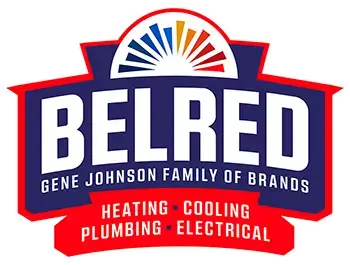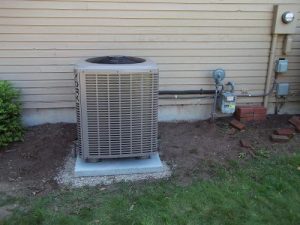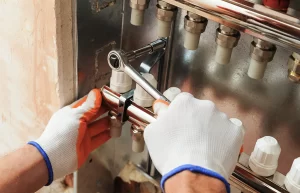With summer right around the corner, it’s the perfect time to talk about how to tune up your AC unit.
Proper AC repair, installation, and maintenance services are essential to ensure a comfortable and cool home during those hot, blistering months.
But what happens if the pros can’t assist you in time?
Lucky for you, there are simple steps you can take to get your AC ready for the summer. Keep reading to learn more about how to perform a DIY AC tune-up.
Basics of an AC Unit
Understanding the fundamental components of your AC unit is the first step in a successful DIY tune-up.
The evaporator coil, housed inside the indoor unit, is where the cooling magic happens. It absorbs heat from your home’s air and passes it to the refrigerant. The refrigerant then moves to the condenser coil in the outdoor unit, where it dissipates the heat to the outside atmosphere.
Air filters are responsible for removing dust, pollen, and other airborne particles before the air circulates through your home. This keeps your indoor air clean and prevents debris from clogging up the system.
The thermostat is the control hub for your AC unit, helping maintain the desired temperature in your home. Drain lines carry the moisture condensed from your indoor air to the outside, reducing humidity levels.
The electrical connections power the fans and motors necessary for moving air and refrigerant throughout the system. Understanding these components and their roles will aid your DIY tune-up efforts.
Signs Your AC Needs a Tune-up
Watch for these signs that may indicate your AC needs a tune-up:
- Inconsistent Temperatures: If some rooms in your home are too hot while others are too cold, it could mean your AC unit is struggling and requires a tune-up.
- Rising Energy Bills: If your energy bills are increasing without a corresponding increase in usage or energy rates, it could be a sign that your AC unit is running inefficiently and needs attention.
- Unusual Noises or Smells: AC units should run fairly quietly. Strange noises or unpleasant odors could indicate problems with the motor or other components.
- Frequent Cycling: If your AC unit is turning on and off more frequently than usual, it might be struggling to maintain the set temperature.
- Reduced Airflow: Poor airflow could mean a clogged filter or problems with the fans.
Benefits of Summer AC Tune-ups
Tuning up your AC unit for summer offers multiple advantages:
- Energy Efficiency and Cost Savings: A clean, well-maintained AC unit doesn’t have to work as hard to cool your home. This efficiency reduces the amount of electricity used, thereby lowering your energy bills.
- Extended Equipment Lifespan: Regular tune-ups help prevent wear and tear on your AC components. By addressing minor issues before they become major, you can prolong the life of your AC unit, saving you from costly replacements in the future.
- Enhanced Indoor Comfort: A well-tuned AC unit provides steady, consistent cooling, maintaining a comfortable indoor temperature. It also improves humidity control, reducing that sticky feeling common in summer.
- Prevention of Unexpected Breakdowns: The last thing you want in the middle of a summer heatwave is an AC breakdown. Regular maintenance helps catch small issues before they escalate, ensuring reliable performance all summer long.
Steps to Tune Up Your AC Unit
Now, you might be asking yourself, how exactly can you tune up your AC unit before summer?
Here are the steps you need to take:
Step1: Replace or Clean the Air Filters
Your AC unit’s air filters should be checked monthly and replaced at least once every three months. Dirty filters restrict airflow, causing your unit to work harder and increasing wear on its components. If you have pets or live in a dusty area, you might need to replace the filters more frequently.
Step 2: Clean the AC Condenser Coils
The condenser coils are located in the outdoor unit and can become coated with dust, leaves, and grass over time. This debris inhibits the coils’ ability to dissipate heat, causing your unit to run less efficiently. Use a garden hose to gently clean the coils, but be careful not to damage the fins that surround them.
Step 3: Check the Coolant Level
The coolant (or refrigerant) in your AC unit circulates through the evaporator and condenser coils, cooling the air as it goes. If the coolant level is too low or too high, your AC won’t cool as effectively. Check for signs of a leak, such as oil residue around the coils or refrigerant lines. If you suspect a coolant issue, call a professional. Handling refrigerants requires special training and equipment due to environmental and safety regulations.
Step 4: Clean the Evaporator Coil
Located in the indoor unit, the evaporator coil absorbs heat from your home’s air. Over time, it can become coated with dust and other debris. Clean it gently with a soft brush, then spray it with a no-rinse coil cleaner, which you can find at most home improvement stores.
Step 5: Check the Thermostat
Make sure your thermostat is correctly reading and maintaining the room’s temperature. If it’s old or unreliable, consider upgrading to a programmable or smart thermostat for better energy efficiency and comfort control.
Step 6: Inspect Electrical Connections
Inspect the electrical connections in your AC unit for signs of overheating, such as discoloration or a burnt smell. Also, check for worn-out wires or loose connections. If you find any issues or are uncomfortable dealing with electricity, call a professional.
Step 7: Check and Clean the Drain Line
The drain line carries moisture condensed from your home’s air to the outside. If it becomes clogged, it can cause water damage and increase humidity levels in your home. To clean the line, you can use a wet/dry vacuum.
Safety Precautions During AC Tune-Up
When performing a DIY tune-up on your AC unit, always prioritize safety. Here are some crucial measures to bear in mind:
Turn Off Power
Always disconnect the power to your AC unit before starting any work. The outdoor unit usually has a switch or a plug you can use for this purpose, while the indoor unit may be connected to your main circuit breaker. This crucial step protects you from potential electric shocks.
Use Protective Gear
Gloves and safety glasses can offer significant protection. Gloves safeguard your hands from sharp components inside the unit and any chemical cleaners you might use. Safety glasses, on the other hand, can protect your eyes from dust, debris, and any cleaner spray rebound.
Avoid Contact with Refrigerant
The refrigerant in your AC system can cause frostbite or serious eye damage upon direct contact. Always avoid touching the refrigerant or any component that might be in direct contact with it, like the coils.
Long-Term AC Maintenance Tips
The key to maintaining the optimal performance of your AC unit lies in regular, long-term care:
Clean Surroundings
The area around your outdoor unit should be clear of any debris, leaves, or grass clippings that could hinder airflow and heat dissipation. A clean space allows your AC to function more effectively and reduces the risk of overheating.
Regular Inspections
Regularly checking all the components of your AC unit can prevent minor issues from escalating into major problems. Catching problems early can result in cost savings and prevent potential breakdowns.
Insulate Your Home
Proper insulation keeps cool air inside and hot air outside, reducing the load on your AC unit. The better your home’s insulation, the less your AC unit has to work, leading to more efficient operation and energy savings.
Professional AC Tune-ups
While a DIY tune-up is an excellent way to understand your AC unit better and keep it in top shape, some tasks require professional expertise:
Comprehensive Maintenance
Professional AC repair, installation, and maintenance services cover more ground than just the steps mentioned above. For instance, they inspect the motor and belts for wear, check the system’s controls for accuracy, and test the unit’s performance.
Refrigerant Handling
Professionals are also trained and certified to handle tasks such as checking for refrigerant leaks and recharging the refrigerant, which requires specialized knowledge and equipment due to environmental and safety regulations.
System Optimization
Professionals can fine-tune your system for optimal performance, helping it run more efficiently and reliably.
Beat the Heat with BelRed
When the summer heat hits, you don’t want to be stuck with a malfunctioning AC unit. It’s time to take action and ensure your home stays a cool sanctuary away from the scorching heat. Whether you’re ready to dive into DIY maintenance or prefer the expertise of professionals, your AC needs proper attention to perform its best.
BelRed is here to handle all your AC repair, installation, and maintenance needs. Our team of experts is adept at catching minor issues before they become major problems, ensuring that your AC unit is always in top-notch condition.
In addition to offering professional tune-ups, we provide a range of services that cover all aspects of AC care, from a quick check-up to complete system overhauls.
Reach out to BelRed today and enjoy a worry-free summer.







